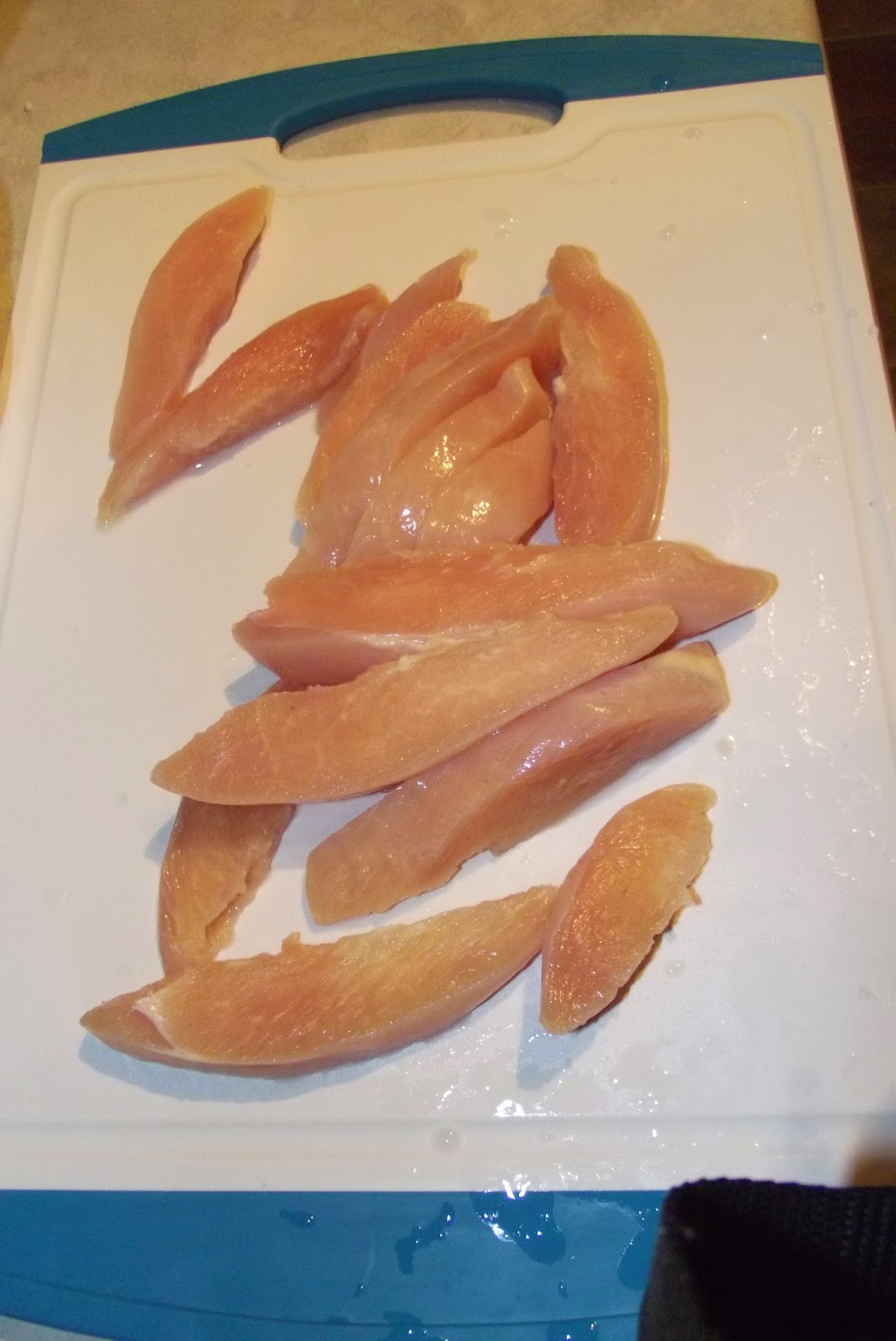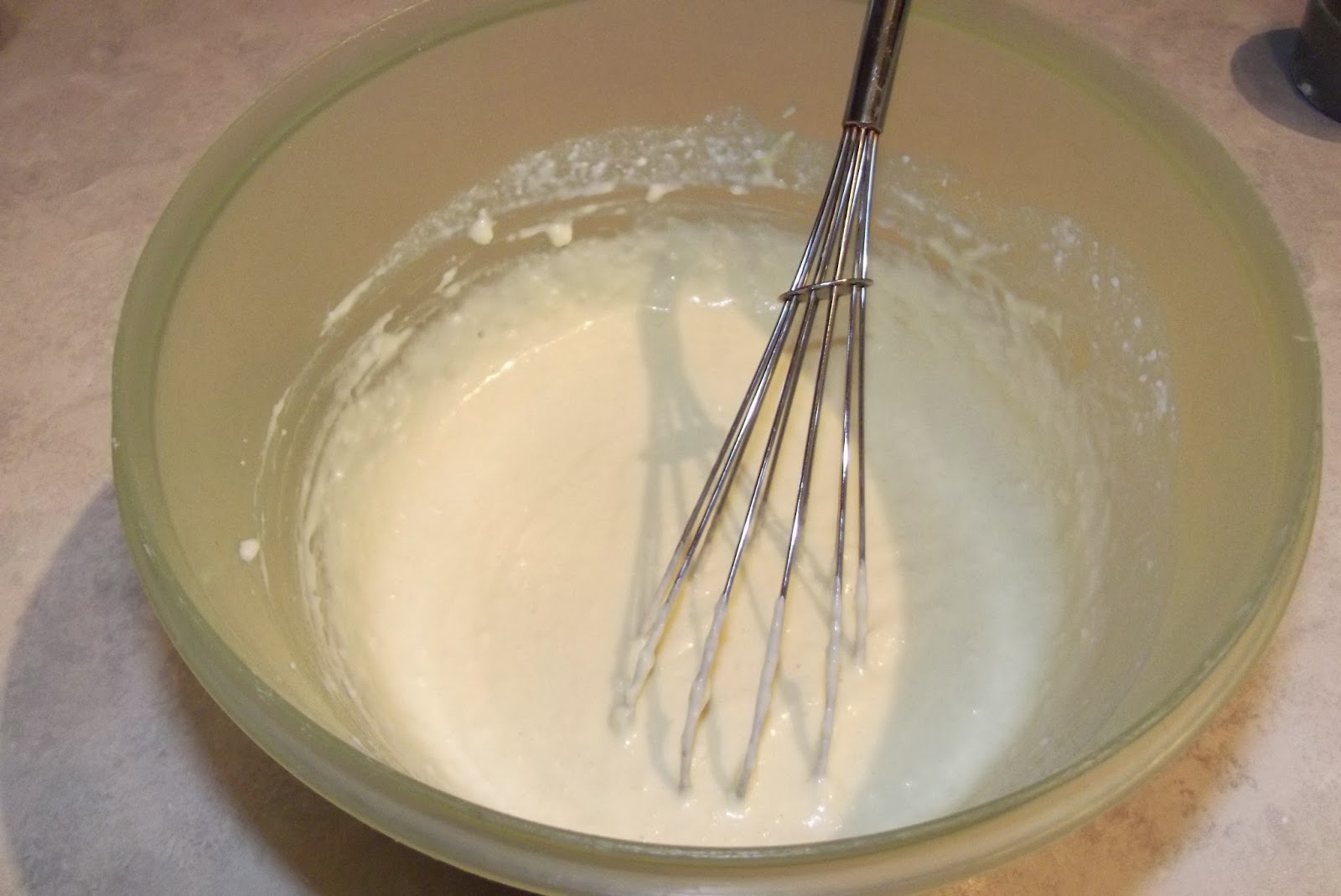Chicken and waffles is a very cheap and easy meal to make, and it tastes so dang good! At my house we make our own chicken strips and make waffles with all purpose baking mix.
 First things first, put a baking rack on a baking sheet and place it in your oven. This will be your retrieval device. Set your oven's temperature to 200 degrees. Preheat your waffle iron, making sure that it is clean and greased. Preheat your deep fryer to 375 degrees. If you don't have a deep fryer, use a heavy-bottomed fry pan or dutch oven with enough oil that your chicken won't stick to the bottom. Remember not to use non-stick cookware for frying. Use cast iron if you've got it.
First things first, put a baking rack on a baking sheet and place it in your oven. This will be your retrieval device. Set your oven's temperature to 200 degrees. Preheat your waffle iron, making sure that it is clean and greased. Preheat your deep fryer to 375 degrees. If you don't have a deep fryer, use a heavy-bottomed fry pan or dutch oven with enough oil that your chicken won't stick to the bottom. Remember not to use non-stick cookware for frying. Use cast iron if you've got it.
Once all that is in place, you can begin on your chicken. Combine 1 cup of flour, 1 tsp black pepper, 1 tsp salt, 1/2 tsp garlic powder, 1/2 tsp paprika, 1/2 tsp Santa Maria seasoning (or any kind of salty spice mix, seasoned salt, Cajun seasoning, etc.) 1/4 tsp onion powder, 1/4 tsp cayenne pepper. If you have a batter pro, like mine in the photo, this is the best way to bread your chicken. If not, just combine it in a shallow bowl and dredge it. That works fine too!

Crack a couple of eggs into a bowl and add about 1/2 cup of milk or cream, beat well.

Cut 2 or 3 boneless skinless chicken breasts into
thick strips.


Dip the chicken strips into your egg mixture and coat well. (You can let them soak around in there if you want to.)

Take your egg-dipped chicken and shake in batter pro, if using, or dredge in flour mixture to coat.
Place evenly-coated chicken pieces into preheated fryer or fry pan and allow to cook until golden brown on the outside. If you are frying in a pan, pay close attention to the temperature of your oil and adjust the heat on your burner accordingly. Once your chicken is golden brown, remove it and place it on your baking rack in the warm oven.




Meanwhile, you can make your waffles. In a mixing bowl measure out 2 cups of all purpose baking mix, 1 1/3 cups milk, 1 egg, and 2 Tbsp vegetable oil.
Mix to combine. Don't over mix, it is okay for your batter to be a little bit lumpy.

Ladle some batter onto your hot waffle iron and close that bad boy up.
Remove your waffles when they are golden brown and crispy, and add them to your baking rack in the oven.
After you've cooked up all your chicken and all your waffles, it's time to dig in! Grab some maple syrup for your waffles, and some dipping sauces for your chicken. I like barbecue and honey mustard for my chicken, Willie eats his with ranch. Enjoy!



























